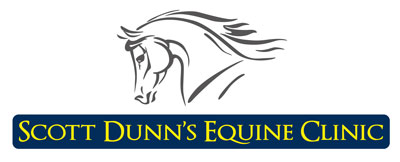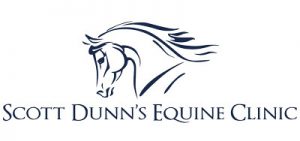Tendon injuries
Tendons are the strap-like elastic structures that attach muscles to the bones of which they act on. Most tendons are relatively short and rarely damaged. However the long tendons of the limbs are vulnerable to damage during exercise or as a result of trauma. The flexor tendons are the most important structures of which are discussed below.
Location of these tendons
The flexor tendons which are the deep digital flexor tendon (DDFT) and the superficial digital flexor tendon (SDFT) run down the back of the limb from the level of the knee/hock.
The SDFT ends on the pastern and the DDFT end on the back of the pedal bone. At the level of the knee and hock along with the fetlock and pastern region the tendons are enclosed by a fluid filled sheath. The most commonly recognised sheath is the digital sheath at the fetlock/pastern region with the sheath at the hock called the tarsal sheath and the knee carpal sheath. Several strong, short annular ligaments help to keep the tendons in place in regions of high movement such as joints.
The tendons themselves are composed of longitudinally arranged bundles of fibres. Blood supply to tendons and ligaments are poor compared to muscles and other tissues.
The different types of tendon injuries
Injury to these tendons commonly occurs during exercise. Strenuous exercise can result in tearing of fibres especially in unfit horses. Even fit horses which are over stretching tendons in fast work or on unlevel ground or during jumping at speed can damage these structures. The degree of damage can range from minor, with minimal fibre damage to severe with total tendon rupture.
Most frequently, a proportion of fibres are damaged in a localised area within the tendon called a zone. This may form a discrete hole which extends for a variable length of the tendon.
A knock to a tendon may result in slight bruising or severe damage leading to tendon rupture. Sharp trauma which cuts through the skin can vary from minor tendon damage to partial or full thickness laceration of the tendon. If a tendon sheath is involved these can lead to potentially life threatening infection if not dealt with promptly.
First signs of tendon injury
Damage to a tendon usually results in inflammation which we commonly feel as heat and swelling. Minor fibre damage leads to slight enlargement of the affected part of the tendon which feels warmer than the corresponding area of the opposite limb. Mild sprains often do not cause lameness. If there is severe damage, the limb can become very painful, with the toe tipped upwards or the fetlock may sink at the walk. In cases of tendon sheath sepsis the horse will also be very lame.
Diagnosis of tendon injuries
If you suspect that your horse has a tendon injury, you should call the clinic for advice and an appointment. A clinical examination will help to confirm or alleviate concerns by looking for heat, pain on palpation. The extent of damage by look and palpation is difficult to assess accurately. An ultrasound scan approximately one week after injury will allows us to visualise the damaged structure(s) if they are above the hoof capsule.
Treatment options
There are several different treatment options for tendon injuries of which none provide guaranteed permanent return to soundness. Damaged tendon heals with irregularly arranged fibres and scar tissue are less elastic than the original structure. Thus the repair is weaker and more prone to re-injury than healthy tendon.
Initial treatment in the 10-14 days after an injury usually involves:
- Box rest.
- Ice application or cold hosing two to three times daily and/or application of kaolin poultice
- Bandaging to immobilise the limb.
Anti-inflammatories such as Bute to aid in reduction of swelling and provide pain relief.
These steps are aimed at reducing the initial inflammation and pain along with preventing any further injury. Once the initial inflammation has stabilised and confirmation of the severity of injury a controlled exercise program can be started.
Controlled exercise
This is the most important aspect of recuperation and treatment. Your vet will advise you what is best for a particular injury but will generally start with hand walking while still on box rest with gradual increases every one to two weeks for a period of three months. In certain cases an initially period of total box rest is advised. Horses are often out of work for six to 12 months with these injuries. Controlled exercise helps the new tendon fibres align longitudinally ultimately resulting in increased strength and flexibility.
Repeat ultrasound scans are invaluable as an aid to determining the healing process and aid in adjusting the exercise program accordingly such as when to introduce trot work or steady canter exercise. In certain cases the horse will not be able to return to full competition and may require a less stressful job to reduce the risk of re-injury.
Other treatments options
None of the treatments available reduce the horse’s lay off period. But there aim is to improve the quality of repair and reduce the risk of re-injury on return to exercise.
- Tendon splitting or fenestration. A scalpel incision or lots of needle holes can be made to release the initial blood clot from a core lesion and this may help new blood vessels to grow into the injured area. This treatment requires to be done within one to two weeks of the initial injury,
- Tendon injections. A group of drugs called PSGAG’s can be used successfully to inject tendon injuries and assists in short term healing. More commonly we now use either stem cells or platelet rich plasma, both of which are injected directly into the tendon soon after injury.
Platelet rich plasma
Platelets are little blood cells responsible for clotting blood. They contain many growth factors. When injected into a tendon the growth factors encourage new blood vessels to grow into the injury site and more normal tendon fibres to develop. The horses’ blood can be taken and the platelet fraction harvested and injected immediately into the tendon. This is done under light sedation with a nerve block to desensitise the limb
Stem cells
Stem cells live in the bone marrow and have the ability to grow into many different types of tissue, according to where they find themselves. Bone marrow also contains lots of growth factors, much like platelets. Bone marrow can be aspirated from the horse’s pelvis or sternum and sent to a specialist lab called Biobest to culture more stem cells. These are then injected into the injured tendon under sedation and a nerve block local anaesthetic along with growth factors in the liquid they are suspended in. The stem cells then turn into new tendon cells (a process that happens very poorly normally) providing a better quality of tendon repair.
- Surgery is sometimes performed in the case of tendon lacerations to help oppose the edges of the damaged tendon or in the case of tendon sheath sepsis to remove infection both of these procedures are carried out under general anaesthesia.
In certain cases the accessory ligament of the SDFT is cut to allow the muscle and tendon to stretch further and reduces the incidence of SDFT re-injury. Again this needs to be performed under general anaesthesia but is not currently routinely performed as it can increase the risk of a suspensory ligament injury after surgery.
- Tendon Firing. This has been carried out since the Middle Ages, and still is, despite more modern treatment options is carried out with or without counter-irritation (blistering) in certain cases. Rest is essential after firing or blistering and is generally enforced by the inflammation caused.
Ligament injuries
Ligaments are the elastic soft tissue structures that connect the ends of bone at joints. In certain cases they attach from a bone to a tendon ie the inferior check ligament. Their role is to maintain bones in alignment and provide support to a joint. They are usually located on either side of a joint. Therefore the name collateral is often in their name relating to positioning. Some joints have one ligament on each side and others such as the stifle
How are ligament injuries caused
They can occur in multiple ways such as direct trauma, abnormal or excessive forces placed on a joint, eg turning at speed. The severity of lameness exhibited can be from mild to severe. In cases of complete rupture there can be instability of the affected joint. As with tendon injuries there is often heat, pain and swelling in the region of injury.
Common Ligament injuries in the horse include:
- Suspensory ligament desmitis.
- Collateral ligaments of the coffin joint, fetlock joint and hock joints.
- Palmar annular ligament of the fetlock.
- Accessory (check) ligament of the deep flexor tendon.
- Meniscal and cruciate ligaments of the stifle.
Diagnosis of ligament injuries
In severe cases of ligament injury the presence of heat, swelling and pain on palpation may be present to aid localisation of injury and ultrasound will likely confirm diagnosis. In other cases which are more subtle or involved within the hoof a full lameness investigation might be required. This would involve such procedures as nerve blocks followed by radiography, ultrasonography and in certain cases advanced procedures such as magnetic resonance imaging (MRI) to obtain a diagnosis.
Treatment of ligament injuries
The initial treatment of these injuries are often managed similar to that of tendon injuries and can be a combination of initial treatment in the 10-14 days after an injury usually involves;
- Box rest.
- Ice application or cold hosing two to three times daily and/or application of kaolin poultice.
- Bandaging to immobilise the limb.
- Anti-inflammatories such as Bute to aid in reduction of swelling and provide pain relief.
This is often followed by a slow rehabilitation plan which often takes nine months plus to resume normal exercise program if successful. This rehabilitation might initially involve a period of box rest followed by controlled walking often for three months.
Other treatment options
These treatment options include similar to those of tendon injuries:
- Surgery – used to evaluate further the extent of injury or debride lesions. In proximal suspensory desmitis a lateral plantar nerve neurectomy and fasciotomy is sometimes performed to alleviate symptoms of lameness.
- Platelet derived plasma.
- Stem cells.
- Extracorporal shockwave therapy – this involves the delivery of high impact short duration physical ‘shock waves’ to an area of damaged or inflamed tissue. The machine delivers a series of shocks (physical rather than electric) focused on the site of tissue damage and this is usually repeated at seven to 10 day intervals for up to four occasions. The exact mechanism of its action at a cellular level is not clear but there is evidence that it can improve and increase blood flow to the area, reduce pain by suppression of nerve ending activity and increase tendon, ligament and bone generation.


